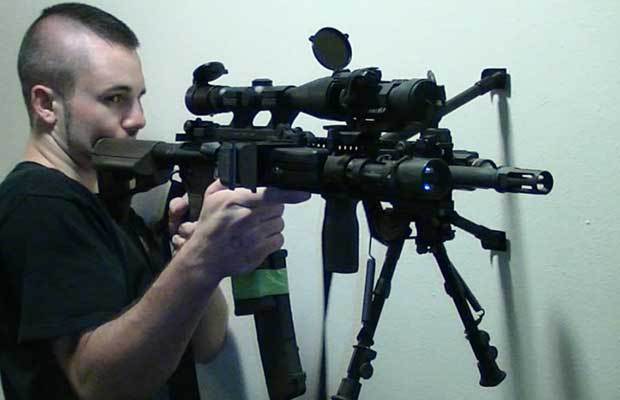Are you Prepping to Bug Out Financially?
As Preppers we take steps to plan for disasters that could force us out of the comfort and safety of our homes. These threats could range from regional weather incidents like Tornadoes, Earthquakes or Hurricanes to longer term disasters that might not be caused by Mother Nature. Even these relatively common regional weather events can cause massive damage in some places, but shelter and safety is usually within a short drive or walk from your home. To reach safety, it may be necessary to throw your Bug Out Bag into the car or on your back and get the hell out of dodge as quickly as possible before the roads are clogged or leaving is no longer possible. The hope is that you will be able to come back home as soon as the disaster has passed and conditions are safe for your return.
When you are preparing to Bug Out, there’s a lot of advice on various aspects of preparing like how to select the right bug out bag, or how to load your bug out bag. We can give you lists of supplies to actually pack in your bug out bag but in some cases, you simply won’t be able to carry everything you will ever need to in one pack.
The perfect bug out bag will give you basic supplies, food and shelter to live for at least 72 hours, hopefully longer without being so heavy that it will kill you. A bug out bag is designed to give you what you need to survive without the benefit of your home and all its supplies but it is only a short-term solution because it will be impossible to carry every single thing you would ever need for any potential scenario. What if the disaster is longer than 72 hours? What if you aren’t able to come back home ever again for some reason? What if the grid goes down and you can’t get to your money any more due to bank holidays, power outages or some currency crisis?
How can you protect your money?
There are a lot of things that we put in our bug out bag but a supply of money is one of those at the very top of the list when we start to consider what we might need in order to survive. I am not talking about lost in the woods survival here but surviving in a society that still operates in cash. Until we have some TEOTWAWKI event, money still has purchasing power so having some extra cash on hand is wise. You might not be able to access the money you have in the bank anymore like the people in Cyprus, so I recommend keeping a relatively large amount of cash hidden somewhere that nobody can find it outside of your bank. Having all of your money in the bank makes this a single point of failure so having a decent amount of cash on hand, as long as you take precautions could save your rear if the banks decide they can’t or don’t have to give it back. How much should you keep out of the bank? That’s up to you but I try to keep as much as possible outside those doors that can lock me out.

Zimbabwe Dollars ranging from 10 to 100 billion printed within a one year period. The magnitude of the currency scalars signifies the extent of the hyperinflation.
Maybe your money will still be accessible, but with inflation it simply won’t buy you anything at some point in the future. This isn’t without precedent as it has happened in the Weimar Republic after WWI and also in Zimbabwe. As a hedge against actions beyond our control; some people are storing precious metals for long-term protection against inflation. Holding physical gold and silver could be crucial to your family’s survival if the currency collapses so many preppers are acquiring silver and gold coins should the Dollar fail someday or the banks prevent you from accessing the money in your accounts.
While those beautiful shiny coins could save your life financially speaking if the fiat money you have ends up being worthless, they also have their disadvantages. When it comes to bugging out, you have to consider the weight. If you have been quietly purchasing precious metals for years in anticipation of an economic collapse, have you given thoughts to how you will take all of that with you?
There are a lot of options when it comes to precious metals. Some people like James Wesley Rawles advocate using pre-1965 US coins because of their silver content. Smaller denominations, in easy to understand measurements would be easier to barter with other individuals he reasons and I agree with that theory. Instead of spending my weekends sorting rolls of quarters from the bank though; I have settled on 1 ounce Silver coins as my precious metal of choice. I chose silver coins because they were more affordable than gold and I could see paying someone with a silver coin being much easier than chiseling off a piece of my gold coin. Gold coins because of their worth are easier to carry, but harder to make change for. I could carry one gold coin or 70 silver coins. When you are bugging out that weight will start to add up.
Let’s say it was the end of the world and you had to bug out with only the items in your bug out bag, your trusty AR15 or preferred end of the world firearm and all of the money you have. If you had one gold coin you could easily carry that around practically anywhere, but the problem comes in when you wanted to purchase something with it. You couldn’t go to a restaurant and pay for a meal with a fraction of your gold coin. You would want some smaller bills (coins) so to speak.
So, instead of gold you chose silver and now all of your silver is loaded in your bug out bag. Just 200 silver coins will weigh over 14 pounds. What if you had more silver? What if you had cashed in your 401K and have 1000 silver coins? That would be over 60 pounds and I don’t care who you are, adding that much weight to your bug out bag will hurt you sooner or later. Not to mention, if you lose your bag or someone steals it, all of your money is gone.
A bug out plan with Precious Metals
So what is a good prepper supposed to do? I still recommend having some precious metals because I don’t have faith the long term health of our monetary system. Does that mean I am right? You have to investigate that for yourself and make up your own mind. If you do plan to purchase some precious metals how can you plan to bug out on foot with all that coin?
You can’t.
What? Is that your great advice? Well, not exactly but you have to plan on this happening. I have some silver and this works for my me and my family, but I would not load it all into my Bug Out Bag. I also might not load it all in my vehicle if I was bugging out either. So what would I do?
I would bury it. Yes, I would bury my precious metals in containers I could dig up later. This poses a couple of problems too though. What if I can’t make it back to my buried treasure? What if I couldn’t find it after it was buried? These are the realities of storing all of your money outside of a central location but they can easily be mitigated. If I had a bug out location, I would bury some, probably most of my silver there. I probably wouldn’t bury much more than a handful of coins if any along the route. I would also bury a lot at my current location. If I was planning to bug out and had time I would dig it up and take it with me, but if the plan was to bug out on foot, I would only take a small amount with me in my BOB and leave the rest buried.
How much would I take? For a bug out scenario I would probably take 20 silver coins and several hundred dollars. All of this money would be divided into different hiding places and probably with different people. This way if one person gets robbed or lost you don’t lose all your money.
You may be asking what the point of buying silver is if it is going to be so hard to carry. You may be saying the same thing about bugging out. This article may be bringing up more problems than solutions but these are things to consider if you plan on bugging out. Having to bury your money in the ground isn’t ideal but neither is losing all of your money when the banks need a bail-in. Having to bug out isn’t ideal either and it helps to plan for how you are going to take your money with you or keep it safe until you can get back.
As Preppers we take steps to plan for disasters that could force us out of the comfort and safety of our homes. These threats could range from regional weather incidents






























 Guns aren’t the only way to kill a person.
Guns aren’t the only way to kill a person.




 Can you fish in SHTF? Fish and the problem with a source for Omega 3 mainly goes away.
Can you fish in SHTF? Fish and the problem with a source for Omega 3 mainly goes away.